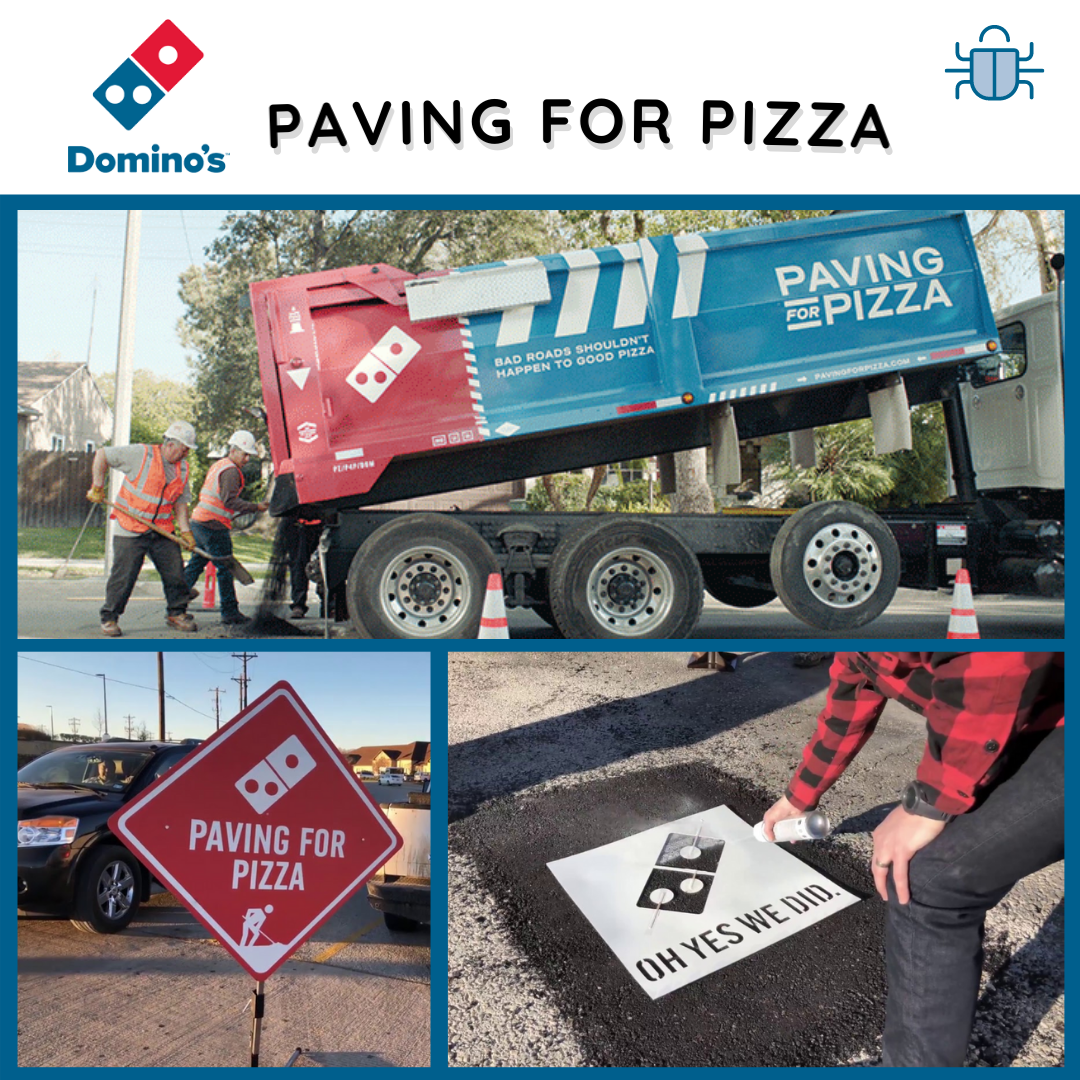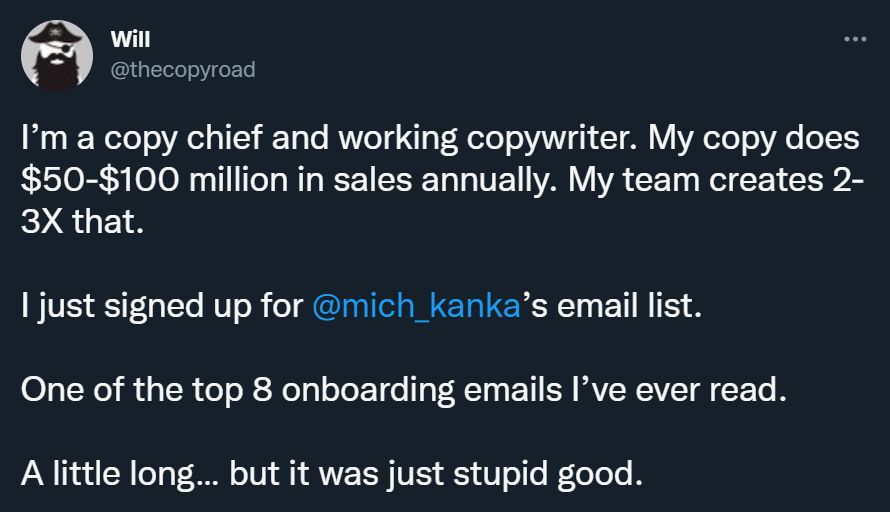
How Domino’s Paving for Pizza Went Viral And Brought 1B Media Impressions – Case Study (8 min read)
Domino’s Paving for Pizza – Domino’s launched a campaign in 2018 in which it fixed potholes based on customers’ requests to ensure the pizza arrives in a perfect condition. It quickly went viral in the States.

Domino’s Paving for Pizza Timeline
- Early 2018 – campaign planning
- Jun 11 – a press release launch, informing about pavingforpizza.com and nominating towns there. First Twitter mentions of the official hashtag.
- Jun 12-13, 2018 – the story is picked by media and begins to go viral. The promotion
- Jun 16, 2018 – 35,000 organic mentions on social media.
- Jun 2018 – the project has also been promoted in TV commercials
- Aug 2018 – Over a billion media impressions
- Late August 2018 – campaign’s second phase is launched. It aims to pave at least one road damage in all 50 states by the end of 2018.
- Oct 26, 2018 – 54,000 social media mentions

What is paving for pizza?
The campaign was based on a true problem of some customers – they were afraid that road bumps and potholes might make their pizza arrive in a mess. Domino’s PR team thought about solving that as a PR stunt by simply fixing the potholes around the US. Then, they had a story to share with the target audience.
When did paving for pizza start?
It all started in 2018, when Domino announced its plans of renewing the potholed roads. However, before launching a full-blown campaign, Domino’s PR ran a pilot in Bartonville, Texas, Milford, Delaware, Athens, Georgia, and Burbank, California. They used it to learn more about how to carry out the project, but also for filming purposes – those cities didn’t get the grant.
Paving for pizza campaign
It works like this. People vote on certain potholes. Then, the most voted are picked and the town's officials get a paving grant funded by Domino’s. Along with the money, some brand assets are sent–stickers, stencils, magnets for the paving equipment, signs to put on the side of the road, and Domino’s gift card for the paving crew.
Nothing that is sent is required to be used, but many cities decided to do so.
How many potholes did Domino fix?
The budget was initially $100,000 to fix potholes in 20 towns, but with the great response, the budget has been quickly expanded

Community management
The campaign used social media to maintain and stimulate organic conversation around the campaign’s topic. At the same time, it drove campaign awareness and through the bottom-up path, it made it to some headlines.
Gamification
One of the core aspects of Paving for Pizza was gamification of the whole stunt. People can vote on the potholes they want to get fixed – the most voted potholes are then repaired by Domino’s. With such a problem
Media coverage
Paving for Pizza worked well for Domino’s PR. The story got picked by USA Today, NBC’s „Today”, Bloomberg, and Washington Post. That brought huge attention to the project, which eventually got over 137,000 nominations, from 15,275 zip codes in 50 states.

Twitter was actively used during the campaign. As usual, it’s a great tool for reaching out to people with an established following, or making your communications reach large numbers of users–it’s much easier to do that here than on Facebook or Instagram.
The official hashtag was #pavingforpizza, and it got organically used to comment on the campaign and post potholes from individual’s neighborhoods, but the towns that received grants have also used it to share the results.

Noble Edge Effect
People tend to respect more socially responsible companies. Part of the narration was to improve the safety of Domino’s customers when they drive home from their stores.
Labor Illusion
People value more things when they can see the work behind them. Paving for Pizza is „just” a campaign, but you can see people fixing the potholes with Domino’s funding and that puts the project in a better light.
Storytelling Effect
PR knows that a good story is what engages the audience and makes media write about the brand. The whole point of the pilot project was to secure great shots that would tell the story about Paving for Pizza.
Reward Bias
People are more willing to take an action when promised a reward. Here, the reward can be the lack of frustration when driving around your hometown, avoiding the potholes. That’s enough to make you go the extra mile to nominate your town and even share the story with your friends to bring your chances up.
Bizarreness Effect
People remember bizarre information better. A pizza company fixing potholes when the town officials should sound quite bizarre.

Almost all PR projects such as Paving for Pizza are meant to go viral, but only a few do. Here, everything was played out perfectly – tapping on a very audacious problem, creating a solution with a gamification element (and sharing potential), and then helping it go viral through organic conversations on Twitter, TV commercials, and possibly some media relationships.
Easier said than done but using creativity and then executing on an idea with a high potential more often than not should be successful.
Get your
"oh sh*t, this might work for us!"
moment in the next 5 minutes
Discover unconventional, easy-to-use, and low budget,
or cost-free methods of acquiring customers and increasing sales!
Viral marketing case studies and marketing psychology principles that made hundreds of millions in months or weeks
In the first email:
- a step-by-step strategy that made $0-$30M within 9 weeks with $0 marketing budget (case study)
- cheatsheet (PDF) of 10 biases in marketing used by top 2% companies
Other than that:
- weekly original content that helps you STAND OUT by providing more perceived value with less work

(You won't find it anywhere else)

Explore Cognitive Biases in Marketing